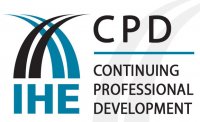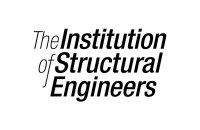Temporary works (TW) are essential to the technical and financial success of construction projects. Proper selection, design and execution of the T.W. is often a key factor in both cost effectiveness and safe implementation of the system adopted.
It is important that temporary works designers are aware of their responsibilities under the current standards and communicate the relevant information required for the success and safe implementation of their design.
On completion of this course, delegates will have:
- An understanding of temporary works design principles and best practices
- The ability to assess and analyse site conditions and constraints to develop appropriate temporary works solutions
- The knowledge of key regulatory requirements and standards related to temporary works design
- Skills in interpreting construction drawings and specifications to develop temporary works designs
- The ability to estimate and plan for temporary works requirements in project timelines and budgets
- An understanding of risk management and safety considerations in temporary works design
- The ability to communicate effectively with project stakeholders, including contractors, engineers, and clients
- Competence in designing some typical elements of TW (e.g., mobile crane footings, basic scaffold, system trench boxes, formwork and falsework)
- Awareness of sustainability and environmental aspects in temporary works design
- Confidence in presenting and defending temporary works designs to relevant authorities and stakeholders
Aims & Objectives:
- To provide participants with a clear understanding of temporary Works and their importance in construction projects
- To familiarize participants with the design principles and considerations that need to be taken into account when designing temporary works
- To equip participants with the knowledge and skills necessary to assess the stability, strength, and safety of temporary Works structures
- To promote an awareness of the legal and regulatory requirements related to temporary Works design
- To enhance participants' ability to effectively communicate with stakeholders and collaborate with other professionals involved in temporary Works projects
- To ensure that participants are equipped to apply best practices and industry standards in temporary Works design
- To inspire a culture of safety and risk management in temporary Works design processes
- To encourage continuous learning and professional development in the field of temporary Works design
Course Outline:
DAY 1
- Course overview and content
- Introductions
- The role of TWD in construction projects
- BS5975:2019 – The code of practice for temporary works procedures and the permissible stress design of falsework
- Temporary Works Process as per BS5975:2019
- Temporary Works Roles and Responsibilities
- Designer Input
- Legal Aspects/CDM 2015
- Designer competency (with examples of temporary works failure due to lack of competence)
- Designers Risk assessment
- Design codes, guides and standards
- Determining the loads and deflections that the TW are required to cater for
- Assessing the influence of site conditions on TW selection and loadings to be carried
DAY 2
- Key stability issues for Scaffold, formwork and support systems
- TG20 and Basic Scaffold Design
- Formwork and Falsework Designs – basic components
- Underpinning – methods and critical issues
- Piling – types and operational issues
- Earthworks – excavation, trenching and embankments, effects of ground water and changing conditions
- Plant associated with temporary works (access road)
- Influence of changes in the site environment and working methods on TW
- Designers Risk Assessment and method statement
Mode of Delivery:
- An examination and discussion of key issues, using a PowerPoint presentation
- Case studies
- Exercises on some basic TW designs (e.g., scaffold, falsework and soffit formwork, wall formwork, needling, trench boxes and mobile crane foundation)
- Discussion and review
- Summary and close
- Final Assessment
Benefits of Attending:
- Gain a better understanding of temporary works design principles, codes of practice, and best practices
- Develop practical skills in designing basic temporary works, allowing them to effectively plan, design, and manage temporary structures on construction sites
- Learn how to identify potential hazards and risks associated with temporary works, leading to a safer work environment for all workers on site
- Enhance their abilities of problem-solving related to the implementation of TW designs on site
- Develop communication skills required to work effectively with stakeholders, contractors, engineers, and other professionals involved in temporary works projects
Delegates who successfully complete introductory temporary works design training may have better career prospects and opportunities for professional development in the construction industry.
Intended For:
- Graduate Engineers
- Site Engineers with responsibility for temporary works
- Designers and checkers of temporary works (basic level)
Pre-Course Requirements:
- Have an awareness of the function of temporary works in a project
- Have experience of site operations
- Have a familiarity with method statements and risk assessments
- Complete a pre-course questionnaire









